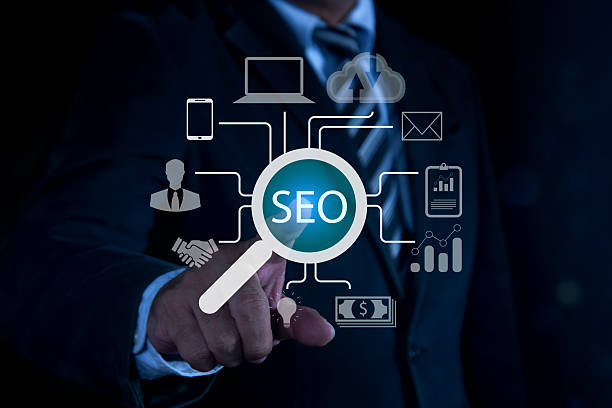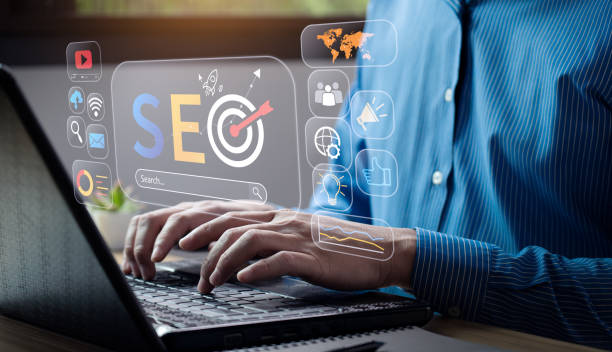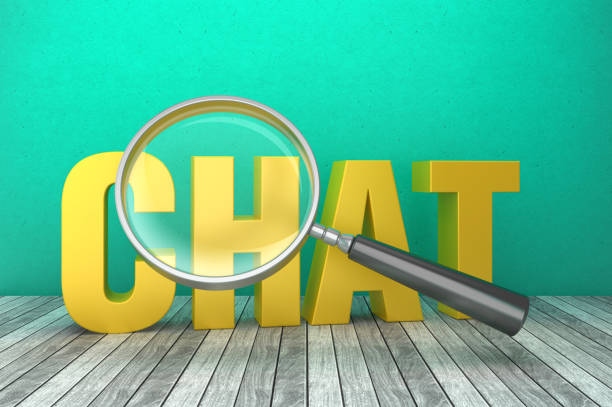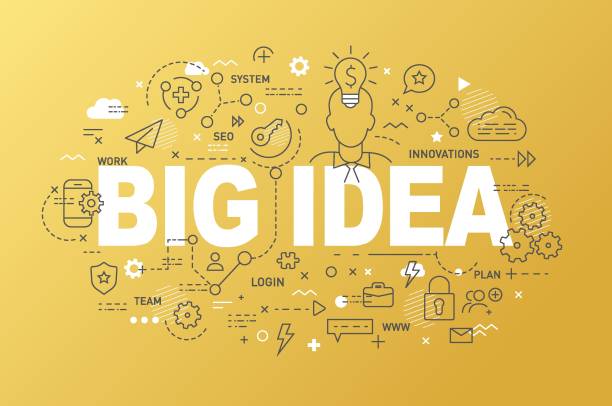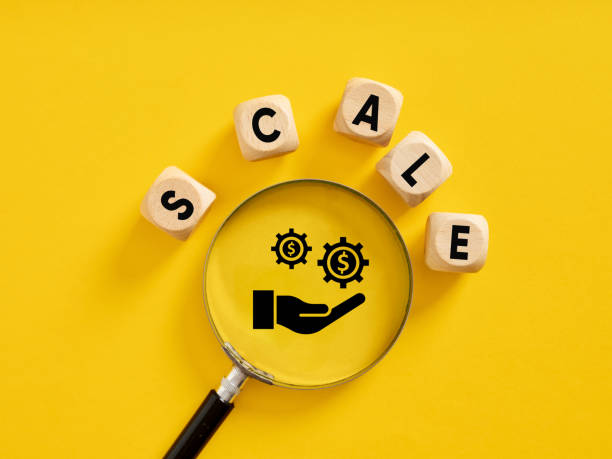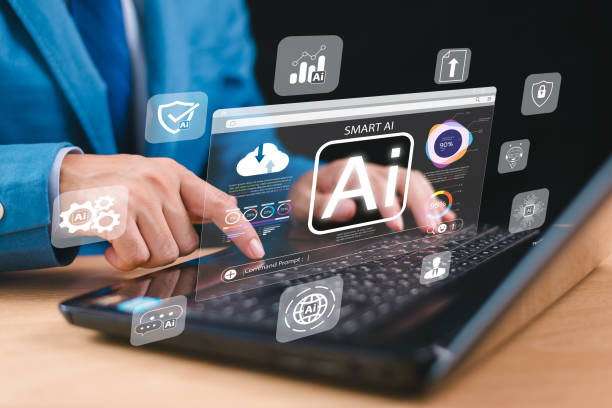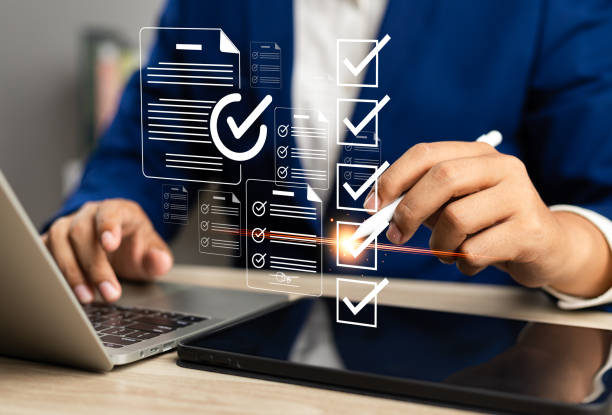What is On-Page SEO and Why is it Important?
What is On-Page SEO and Why is it Important?
On-Page SEO refers to a set of measures taken to optimize website pages to achieve a better ranking in search engines like Google.
These measures focus on the website’s content, page structure, and HTML code.
The importance of on-page SEO lies in the fact that search engines analyze these elements to understand the topic and quality of pages, and then rank them.
Strong on-page SEO helps search engines to correctly identify your site’s content and display it to users who are looking for relevant information.
This not only increases organic site traffic but also improves user experience.
In other words, On-Page SEO is like a beautiful and tidy storefront for your shop in the online world.
The more attractive and tidy the storefront, the more likely customers are to enter the shop and buy from it.
Similarly, in the online world, the more optimized your website pages are for search engines, the more likely they are to appear higher in search results and attract more visitors.
By improving on-page SEO, you can compete more effectively with your competitors and surpass them in search results.
On-page SEO is the foundation of any SEO strategy, and without it, other SEO efforts (such as off-page SEO) will not be as effective.
Are you tired of losing business opportunities due to not having a professional company website?
Rasaweb helps you build a professional company website to:
✅ Create a powerful and reliable image of your brand
✅ Turn website visitors into loyal customers
⚡ Get a free consultation now!
Keyword Research | A Fundamental Step in On-Page SEO
Keyword Research | A Fundamental Step in On-Page SEO
Keyword research is the process of identifying the words that users use to search in search engines.
This process is one of the most important steps in on-page SEO because it helps you to produce content for your site based on the needs and interests of your target audience.
To start keyword research, you can use various tools such as Ahrefs Keyword Explorer, SEMrush, Google Keyword Planner, and Keywordtool.io.
These tools provide you with information about search volume, level of competition, and related keywords.
Click here to preview your posts with PRO themes ››
When choosing keywords, look for words that have both a reasonable search volume and a competition level that is not too high.
Also, pay attention to the relevance of the keywords to the site’s topic and the needs of users.
Keywords can be broadly divided into two categories: Head Keywords, which are usually short and general, and Long-Tail Keywords, which are usually longer and more specific.
Using a combination of both types of keywords in your on-page SEO strategy can help attract a wider audience and increase organic site traffic.
After selecting keywords, use them in titles, meta descriptions, main body text, and image tags.
Optimizing Page Title (Title Tag) and Meta Description
Optimizing Page Title (Title Tag) and Meta Description
The page title (Title Tag) and meta description (Meta Description) are two important HTML elements that are displayed in search results.
The page title is the main title of your page and should accurately describe the topic of the page.
The meta description is a summary of the page content and should encourage users to click on your link.
Both elements should contain the main keywords of the page, but they should not be used artificially or excessively.
The page title should be short, attractive, and relevant to the content of the page.
The length of the page title should not exceed 60 characters, otherwise, it will be truncated in search results.
The meta description should also be a maximum of 160 characters and should describe the content of the page briefly and attractively.
Using persuasive verbs, numbers, and unique information in the meta description can help increase your click-through rate (CTR).
Remember that the page title and meta description are the first things users see in search results, so optimizing them can have a significant impact on attracting organic traffic.
Optimal use of on-page SEO in the page title and meta description helps search engines better understand the topic and content of the page.
On-page SEO.
| Feature | Page Title (Title Tag) | Meta Description |
|---|---|---|
| Length | Maximum 60 characters | Maximum 160 characters |
| Content | Accurate description of the page topic | Attractive summary of the page content |
| Keywords | Includes main keywords | Includes main keywords |
| Purpose | Improve ranking in search results | Encourage users to click |
Optimizing URL Structure | Creating SEO-Friendly URLs
Optimizing URL Structure | Creating SEO-Friendly URLs
URL structure is another important factor in on-page SEO.
SEO-friendly URLs should be short, descriptive, and contain keywords.
Avoid using special characters, numbers, and unnecessary parameters in your URL.
Try to design URLs that are easy to read and understand.
For example, instead of using a URL like “example.com/page?id=123”, use a URL like “example.com/seo-internal-guide”.
This type of URL is not only easier for search engines to understand, but also more attractive to users.
Also, avoid using uppercase letters in the URL and use hyphens (-) instead of spaces.
The URL structure should be logical and hierarchical, indicating the relationship between different pages of the site.
Using categories and subcategories in the URL can help to better organize the site and improve the user experience.
Optimized URLs help search engines to better understand your site’s structure and properly index your pages.
On-page SEO makes your URLs look better.
Does your current website create the trust that potential customers should have in your business? If the answer is no, it’s time to have a professional and impactful company website with Rasaweb.
✅ Completely custom design tailored to your brand identity
✅ Increase lead generation and credibility of your business in the eyes of customers⚡ Contact us for a free consultation!
Optimizing Heading Tags | Organizing Content
Optimizing Heading Tags | Organizing Content
Heading tags (H1 to H6) are used to organize content and create hierarchy on web pages.
The H1 tag should be the main title of the page and should accurately describe the topic of the page.
H2 to H6 tags are used to create subheadings and divide content.
Proper use of heading tags helps search engines to better understand the content structure of the page and recognize the importance of its different sections.
Each page should have only one H1 tag, and H2 to H6 tags should be used in order of importance.
Heading tags should contain keywords related to the topic of the page, but they should not be used artificially or excessively.
Using heading tags not only helps to improve on-page SEO but also improves the user experience.
By using heading tags, users can easily scan the page content and access the sections they want.
On-page SEO with heading tags.
Image Optimization | Reduce Size and Use Alt Text
Image Optimization | Reduce Size and Use Alt Text
Images play an important role in the attractiveness and interaction of users with web pages, but high-volume images can reduce page loading speed and negatively affect site SEO.
Therefore, image optimization is one of the most important steps in on-page SEO.
To optimize images, you must first reduce their size.
You can use various tools such as TinyPNG and ImageOptim to reduce image size without losing quality.
Also, you should use Alt Text to describe images.
Alt text helps search engines understand the subject of the image and display it in image search results.
The alt text should be short, descriptive, and contain keywords related to the topic of the page.
For example, if you have an image of a specific product on your page, the alt text should include the product name and its key features.
Image optimization not only helps to improve SEO but also improves the user experience.
Low-volume images load faster and save users from long waits.
On-page SEO with image optimization.
Content Optimization | Producing High-Quality and Relevant Content
Content Optimization | Producing High-Quality and Relevant Content
Content is king! This famous phrase clearly shows the importance of content in SEO.
Producing high-quality and relevant content is one of the most important factors in on-page SEO.
Your content should be valuable, useful, and attractive to your target audience.
Try to produce content that answers users’ questions and needs and encourages them to interact with your site.
Your content should be unique and original, and avoid copying from other sites.
Your content should be updated regularly and provide new and relevant information.
Using keywords related to the topic of the page in the main body text, heading tags, and meta descriptions can help improve the page’s ranking in search results.
But be careful not to use keywords excessively and unnaturally, as this can have a negative impact on SEO.
Quality content not only helps to improve SEO but also increases the credibility and trust of users.
On-page SEO requires the production of quality content.
| Feature | Description |
|---|---|
| Value | Content should be valuable and useful to the target audience. |
| Relevance | Content should be relevant to the page topic and user needs. |
| Attractiveness | Content should be attractive and readable and engage the user. |
| Uniqueness | Content should be original and not copied from other sites. |
| Update | Content should be updated regularly. |
Internal Linking | Creating Connections Between Site Pages
Internal Linking | Creating Connections Between Site Pages
Internal linking refers to the process of creating links between different pages of a site.
Internal linking helps search engines to better understand your site’s structure and recognize the importance of different pages.
Also, internal linking can help to improve the user experience, as users can easily access related pages.
For internal linking, you should use keywords related to the destination page’s topic as the link text (Anchor Text).
Avoid creating excessive and unnecessary links, and try to place the links naturally in the text.
Internal linking should be strategic and purposeful, helping users and search engines to access the more important and related pages of the site.
By creating a strong internal link network, you can improve the ranking of your site’s different pages in search results and attract more organic traffic.
On-page SEO with internal linking.
Are you bothered by losing customers who have visited your site to make a purchase?
Rasaweb is your specialized solution for having a successful online store.
✅ Significant increase in your online sales
✅ Creating trust and professional branding with customers⚡ Get free advice from Rasaweb experts!
Site Speed Optimization | Improving User Experience and SEO Ranking
Site Speed Optimization | Improving User Experience and SEO Ranking
Site speed is one of the important factors in SEO and user experience.
Users expect web pages to load quickly, and if a page takes too long to load, the likelihood of a user leaving that page increases.
Search engines also pay attention to site speed as a ranking factor, and sites with higher loading speeds rank better in search results.
To optimize site speed, you can use various methods such as reducing image size, using CDN, enabling Gzip compression, and optimizing HTML and CSS code.
Also, you can use various tools such as Google PageSpeed Insights and GTmetrix to analyze site speed and identify problems and weaknesses.
By improving site speed, you can improve the user experience, reduce the bounce rate, and improve your site’s SEO ranking.
On-page SEO requires an appropriate site speed.
Mobile SEO | Optimizing Site for Mobile Devices
Mobile SEO | Optimizing Site for Mobile Devices
With the increasing use of mobile devices to search the internet, mobile SEO has become one of the most important aspects of SEO.
Google prioritizes sites that are optimized for mobile devices and shows them higher in search results.
To optimize your site for mobile devices, you should use Responsive Design.
Responsive design allows your site to automatically adapt to the screen size of different devices.
Also, you should use readable fonts suitable for mobile devices and make sure to place buttons and links at appropriate distances so that users can easily interact with them.
Page loading speed is also very important on mobile devices, as mobile users usually use the internet at slower speeds.
By optimizing your site for mobile devices, you can improve the user experience, increase mobile traffic, and improve your site’s SEO ranking.
On-page SEO and the importance of mobile SEO.
Frequently Asked Questions
| Question | Answer |
|---|---|
| What is On-page SEO? | On-page SEO refers to the set of actions that are performed inside the website and on the content of the pages to obtain a better ranking in the search results. |
| Why is on-page SEO important for a website? | On-page SEO helps search engines to better understand the content of your page and assess its importance. It also provides a better user experience for visitors. |
| What are the most important on-page SEO factors? | The most important factors include keyword optimization, content quality, Title Tag, Meta Description, URL structure, Heading tags (H1-H6), internal linking, and image optimization. |
| What role does the Title Tag play in on-page SEO? | The Title Tag is one of the most important on-page SEO factors, which displays your page title in the search results and browser tab. It should include the main keyword and be attractive. |
| What is the importance of Meta Description in on-page SEO? | The Meta Description provides a summary of the page content and, although it does not directly affect the ranking, it can increase the click-through rate (CTR) by encouraging users to click. |
| How are keywords used in on-page SEO? | Keywords are phrases that users use to search for information in search engines. The proper and natural use of them in the content helps the search engine to identify the topic of the page. |
| What is internal linking and what are its benefits in on-page SEO? | Internal linking means creating links between different pages of a website. This helps to distribute the credibility of pages, helps search engine bots crawl, and improves the user experience. |
| How does image optimization affect on-page SEO? | Image optimization includes compressing the volume, using appropriate Alt tags, and properly naming files. This improves the page loading speed and helps search engines understand the image content. |
| What does high-quality content mean in on-page SEO? | High-quality content means content that is comprehensive, accurate, unique, up-to-date, and user-friendly and meets the needs of users. |
| What role does the URL structure play in on-page SEO? | Readable, short URLs that include the main keyword help search engines and users to have a better understanding of the page content and improve the user experience. |
and other services of Rasa Web advertising agency in the field of advertising
Smart conversion rate optimization: an exclusive service for growth and improvement of SEO ranking based on the use of real data.
Smart digital branding: professional optimization to improve SEO ranking using real data.
Smart UI/UX: A new service to increase online growth through marketing automation.
Smart Reporting: A new service to increase sales through custom programming.
Smart Google Ads: professional optimization to increase sales using smart data analysis.
And more than a hundred other services in the field of internet advertising, advertising consulting, and organizational solutions
Internet advertising | Advertising strategy | Reporting advertising
Resources
On-page SEO factors
,Complete tutorial on On-Page SEO
,On Page SEO training
,What is internal SEO? Complete internal SEO training
? Are you ready to transform your business in the digital space? Rasaweb Afarin Digital Marketing Agency, by providing specialized and integrated solutions, including advanced WordPress website design services, helps you to have a powerful and impressive presence in the online world.
📍 Tehran, Mirdamad Street, next to the Central Bank, South Kazerun Alley, Ramin Alley No. 6


